London walk: Kew Gardens, Richmond Lock, Syon park and Brentford
Report by urban75 editor, Oct 2005
The walk starts at Kew Gardens station, which is on the District tube line (trains from Victoria and Earl's Court) and the North London rail line, running from Richmond to east London via Hampstead and Camden.
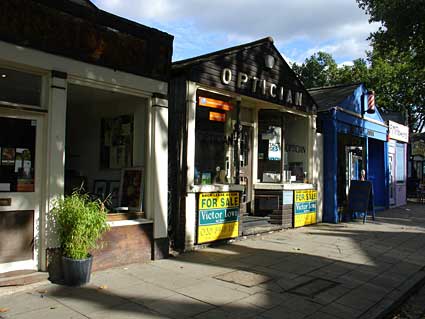
Heading north-east from the station along Station Approach, you can see these delightfully old fashioned wooden shops at Kew Gardens.
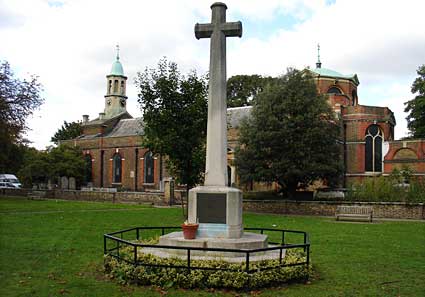
Heading north up to Kew, we came across Kew Green, with the redbrick St Anne's church dominating the southern corner.
Helped by a £100 donation from the Lady of the Manor, Queen Anne, a chapel and cemetery was constructed on the site and dedicated to St Anne in May, 1714.
With the population of Kew increasing due to the royalty and court living in the area, the church was enlarged in 1770 to designs by Joshua Kirby.
In 1769, the King forked out to expand the chapel, a gallery was added in 1805 at King George III's behest, with further vestries and stairways being gradually added up to 1836.
William IV fancied a fiddle about with the building too, remodeling the west front in 1836.

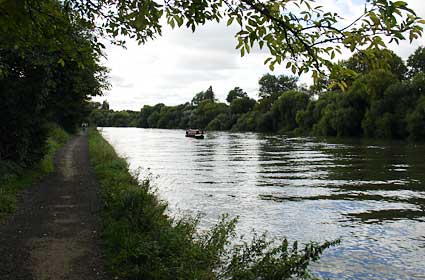
Walking across Kew Green and up Ferry Lane we picked up the Thames path and headed south-east toward Richmond.
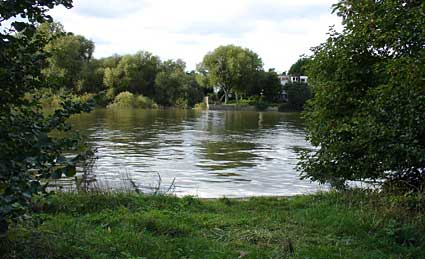
The fairly narrow gravel path borders Kew Gardens and then the Old Deer Park as it wends it way towards Richmond.
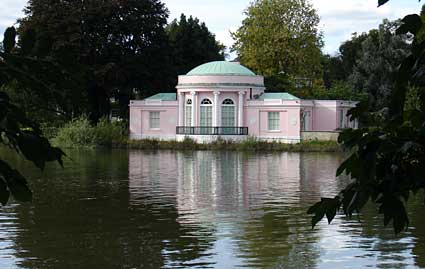
A view of the attractive Old Isleworth Boating Pavilion, built in the 1770s by James Wyatt.

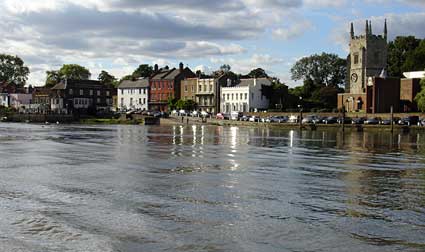
Looking across to the pretty waterfront of Old Isleworth.
The tower of the Church of Holy Trinity (to the right) dates from the 14th Century, with the church being rebuilt in 1705 and 1970.
The 1970s development involved a somewhat incongruous modern building being bolted on after the church was gutted by an arson attack in 1943.
 Church of Holy Trinity Church of Holy Trinity
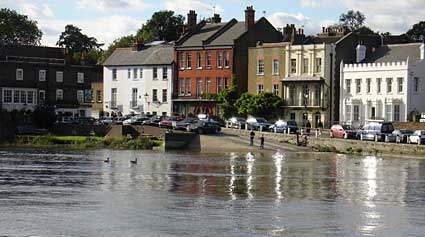
A closer view across the Thames.
There's been a riverside settlement at Isleworth from prehistoric times, with the earliest form of the name being Gislhaesuuyrth, meaning Gilhere's settlement.

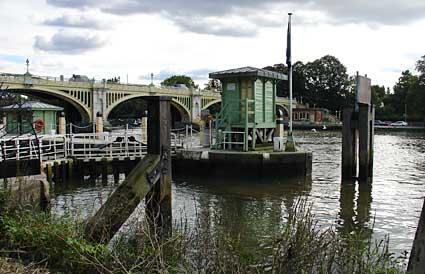
With the removal of the palisades following the demolition of old London Bridge in 1832, the tides on the Thames started rising and falling far more rapidly than previously.
This, coupled with the dredging of the lower river, reduced the Thames at Twickenham and Richmond to little more than a stream running through muddy banks for much of the day.
After years of petitioning, permission was granted in 1890 to build a half-lock and weir downstream of Richmond Bridge, with the structure being officially opened by the Duke and Duchess of York in 1894.
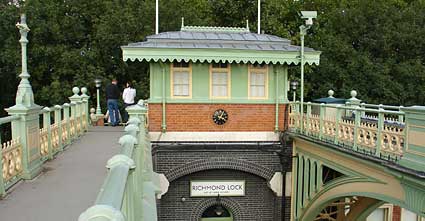
Situated between Between Teddington and Richmond, the lock comprises of three vertical steel sluice gates suspended from the footbridge.
For around two hours each side of high tide, the sluice gates are raised into the footbridge structure above, allowing ships and boats to pass through the barrage.
For the rest of the day, the sluice gates are closed, and passing river traffic must use the lock alongside the barrage.
The sluice gates ensures that the water level between Richmond Lock and Teddington Lock is maintained at or above half-tide level.
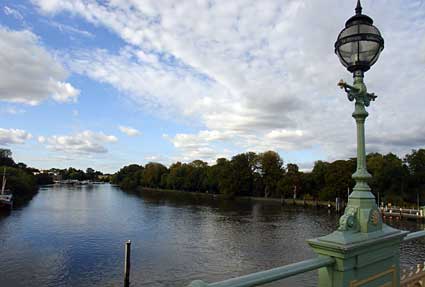
View from the north footbridge.
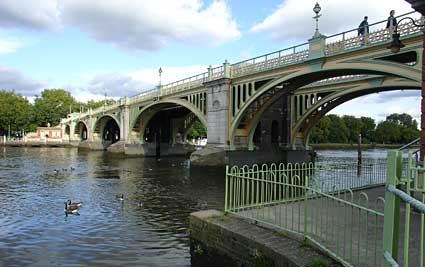
Looking back at the bridge from the opposite side of the river.
You can just make out the location of the sluice gates in the centre of each bridge pier.
Each gate weighs 32 tons and is 66 feet in width and 12 foot in depth.
The footbridge was the last on the tidal river to levy tolls, with all fees being abolished in 1938 (you can still see the site of the turnstile as you get on the bridge).

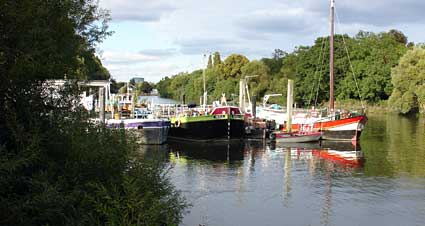
Walking towards Isleworth Ait.
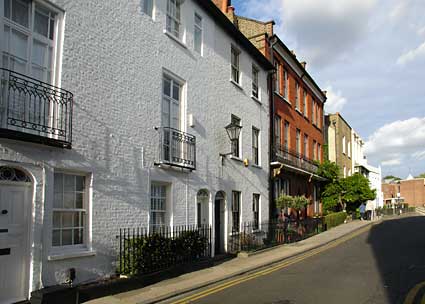
There's some lovely 18th and early-19th centuries buildings in Old Isleworth.

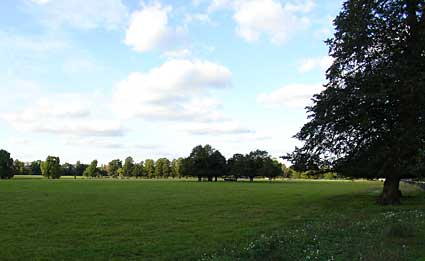
Past Old Isleworth, the walk takes you through Syon Park, a 200 acre park which is the London home of the stinking rich Duke of Northumberland, whose family have lorded it over local peasants for over 400 years.
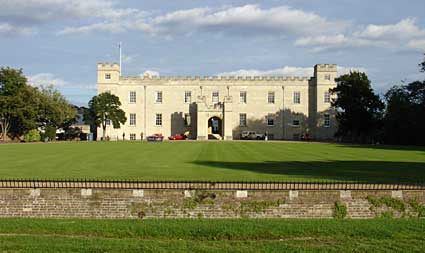
One of the last great abbeys to be built (completed in 1431), Syon got its name from Mount Zion in the Holy Land.
The abbey was dedicated to the Bridgettine Order, but was brutally dissolved by King Henry the Eighth in 1539 and remodelled as a house in 1547.
The story goes that when King Henry VIII's coffin was brought to Syon in 1547 on its way to Windsor for burial, it burst open in the night and dogs tucked into the remains - an event seen as divine judgment!
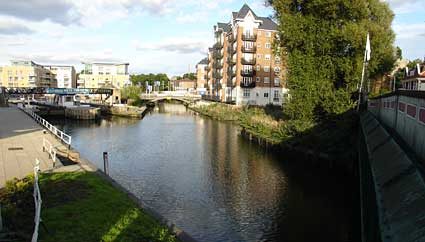
Leaving Syon Park, the walk takes us to Brentford Dock, once home to large railway marshalling yard with various warehouses, workshops and goods sheds.
Constructed to Brunel's plans as a freight link between river-borne traffic and the Great Western Railway's (GWR) rail network in 1859, the docks closed in the 1950s and 1960s and the site has recently been developed into residential properties.
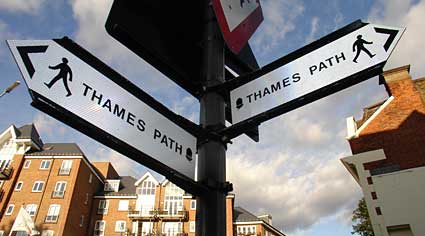
It has to be said that the signs get a little confusing around Brentford!

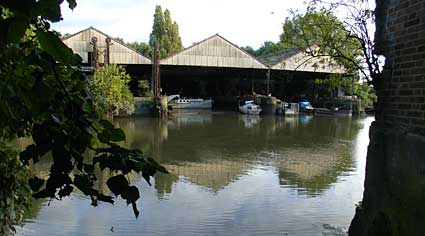
The 18th century Grand Union Canal joins the Thames at Brentford, and there's still several boat-related industries in the area.
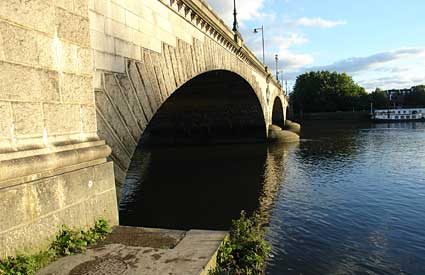
Forming a boundary between the traditional counties of Middlesex and Surrey, the first bridge over the Thames at Kew was built in 1758/9.
A wooden affair with 11 spans, it was constructed by Kew-ferry operator Robert Tunstead who - mindful that it was the only bridge between Fulham and Kingston - made a mint by charging hefty tolls.
A replacement stone bridge was commissioned by Tunstead's son (another Robert) in 1782, employing the designer of nearby Richmond Bridge, James Paine.
The Purbeck stone toll bridge opened in 1789 and lasted for over a hundred years.
Tolls had already been removed in 1874 after Queen Victoria bought the old bridge, and her son opened the present bridge on 20th May 1903.
Its official name is the King Edward VII Bridge, but no one calls it that.
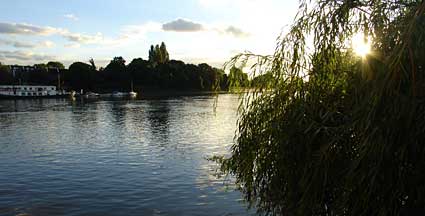
Looking across the Thames from the base of Kew bridge.

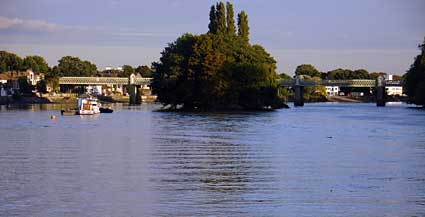
Looking east from Kew Bridge with Kew Railway Bridge in the distance.
Built in 1869 by the London and South Western Railway, the bridge is used by North London Line trains and London Underground's District Line running between Richmond and Central London.
Dominating the centre of the picture is Oliver's Island, so-called because Cromwell is supposed to have taken refuge on the island during the Civil War.
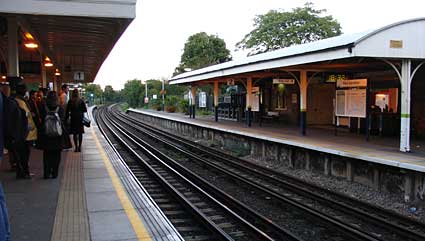
Constructed between 1868-1870 by the London and South Western Railway, Kew Gardens station is a fine example of mid-Victorian railway architecture and its buildings are now protected as part of the Kew Gardens conservation area.
|

